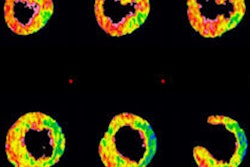Dear AuntMinnieEurope Member,
Now that it's a fully digital discipline, radiology is ideally suited to e-learning. But in Europe at least, the profession has been slow to wake up to the vast potential of this area.
A new case study from Germany is likely to generate considerable interest, however. At Tübingen University, e-learning is being used effectively to enliven radiology education among medical students, which must be good news for the future. Go to our Imaging Informatics Community, or click here.
Evidence continues to grow about the added value of the latest dual-source CT scanners, particularly when it comes to radiation dose optimization. Research presented at last month's ECR 2017 in Vienna is well worth a close look. Find out more in the Cardiac Imaging Community, or click here.
Pelvic floor disorders are a common health problem, and can be exacerbated by advanced age, obesity, smoking, previous pelvic surgery, and other factors. MRI is proving of great value in these cases, but the appropriate technique is essential for success, says a Portuguese team whose research received the accolade of a magna cum laude at ECR 2017. Get the full details here.
Austrian researchers examined cancer characteristics of women residing in the state of Tyrol, looking specifically at breast cancer cases exposed to screening versus those unexposed to screening. They found there is indeed a difference, particularly in tumor size and stage of breast cancer. Read more here.
Peru is a fascinating South American country, but very little has been published about the organization and practice of radiology there. What special challenges are faced by radiologists in the country? Click here to learn more.
As the skiing season draws to a close in Europe, don't miss our sports-based Case of the Week from musculoskeletal radiologists at the Medical University of Vienna.



















